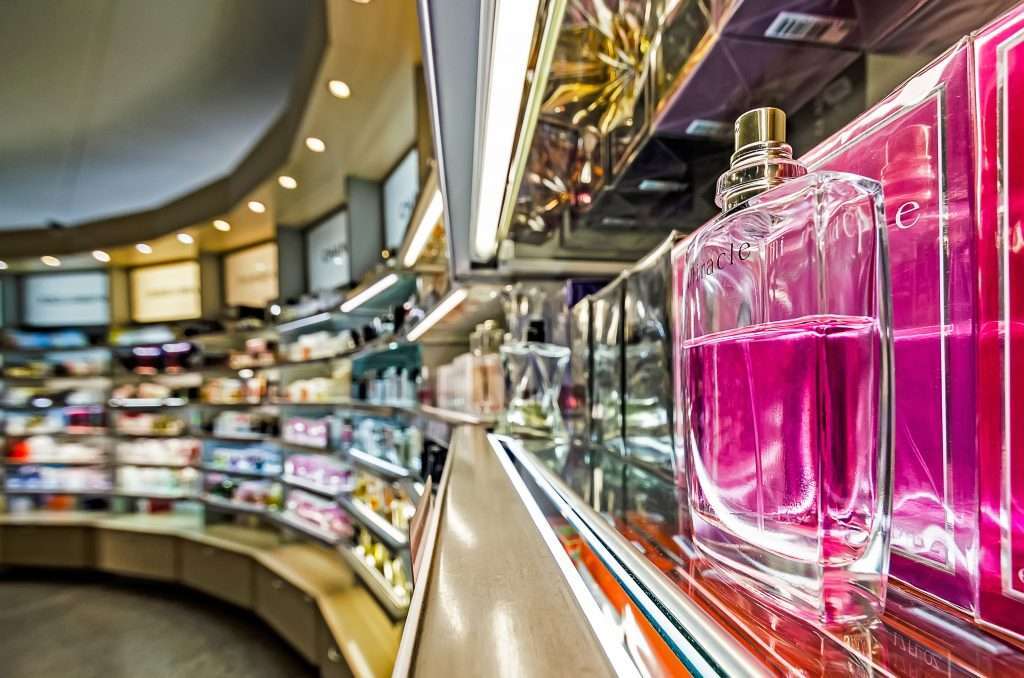
The perfumes Anuja Aromatics and the 4 different Therapy for your Well-being
LITHOTHERAPY AND FRAGRANCE DIFFUSER PENDANTS Anuja Aromatics

The rise of chemistry in the XNUMXth centurye century has profoundly modified perfumery and its manufacturing techniques. Synthesis has notably enabled perfumers to access many raw materials that do not exist in their natural state. And, since the end of the XIXe century, chemistry plays an increasingly important role in perfumery. Certain natural compounds that are very expensive or very difficult to obtain (this is the case for example of plant or animal essences) have been replaced by inexpensive and polluting synthetic products.
This development made it possible for perfume not to be an unaffordable product, in particular thanks to the appearance of new houses (Guerlain in 1828, Piguet, Coty) at the same time.
Around 1830, in France, chemists (and not perfumers) developed for the first time techniques allowing the synthesis of odorous molecules. Nowadays, these synthetic molecules represent 98% of all substances used in perfumery.
This percentage is explained by the fact that the synthesis represents many advantages. First of all, some smells like lily of the valley or lilac had never been able to be extracted although the scent they gave off was more than promising. Now, thanks to progress in the field of organic chemistry, their synthesis is possible.
On the other hand, the cost of manufacturing plant essences, the quantities of flowers and supply difficulties linked to climatic or economic conditions have led to excessive use of synthetic molecules.
Synthetic perfumes therefore have economic advantages (since before the 1900s perfumes were only accessible to the upper classes). But in addition to copying the chemical structure of molecules existing in nature, it enriches the range of perfumers with completely new scents and often the source of commercial success. In fact, in the past, creators of perfumery had at their disposal only 300 different smells, whereas today, they have more than 4 to compose their fragrances and this number continues to increase.
Total synthesis, on the other hand, recreates bodies from a fossil material resulting from petrochemistry (alcohol, benzene, acids, etc.) such as esterification reactions which correspond to the action of an acid on an alcohol. A synthesis sometimes requires a whole series of chemical reactions (esterification, cyclization: making a linear molecule cyclic, hydrogenation, etc.). The more steps there are, the more expensive the end product will be.
2. Natural raw materials :
The return of natural raw materials.
Since the 1970s in Europe and before that in the United States, various movements highlight the risks presented by theartificialization growing environment and the share of chemicals and synthetic products in agriculture, food and cosmetic products. After a phase of developing synthetic products (some of which have replaced rare plant or animal materials), the perfume industry and consumers seem to be reorienting themselves towards the use of natural raw materials for the composition of perfumes.
This movement is accompanied by more than one trend à search for labeled products biological origin, with a concern for environmental protection and / or a fear of harmful effects of chemicals and syntheses (cancers, sterility, endocrine disruption…), Or in general a desire for authenticity. This pushes perfume houses to formulate their products with natural and real essences of flowers, plants, wood… thus, a new olfactory family was born: organic and natural perfumes. 100% natural origin, they are today the new field of new creations with pure and new smells. The future of perfumery seems to be turned towards more naturalness.

LITHOTHERAPY AND FRAGRANCE DIFFUSER PENDANTS Anuja Aromatics

The Perfume ÉLIXIR DES CIEUX with its floral, luxurious scent,